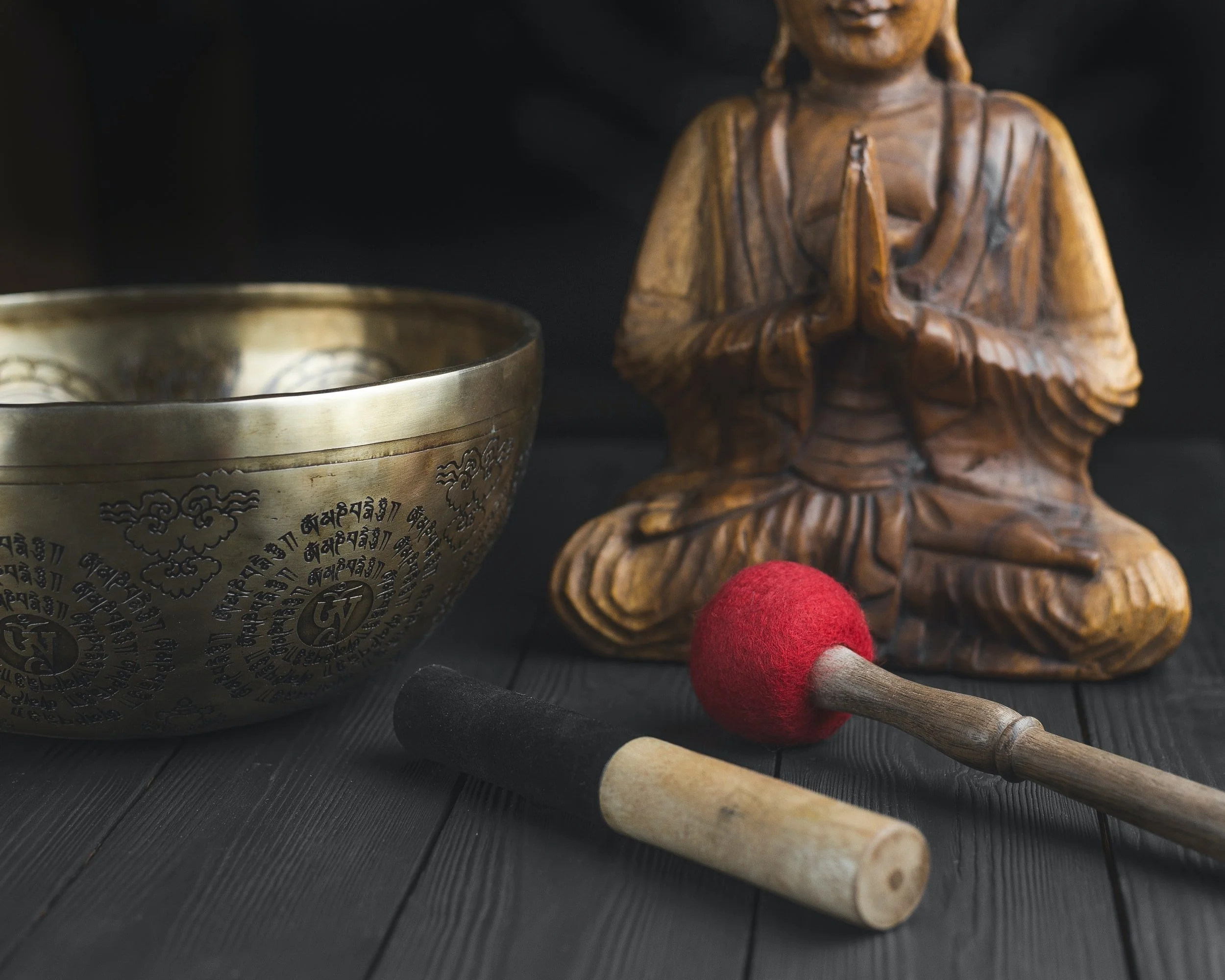Sounding Your Centre: How Mantras Can Ground And Inspire The Creative Mind
/Sounding Your Centre: How Mantras Can Ground and Inspire the Creative Mind
For centuries, mantras have been whispered, chanted and sung as a pathway to calm, clarity and connection. Rooted in ancient traditions, they’ve found new resonance with creatives seeking not only inspiration, but emotional balance and somatic grounding in a fast, fragmented world.
But can a mantra really help you face a blank canvas? Or soothe the sting of creative rejection? Can it help you reconnect when you feel scattered or self-critical?
Yes. And perhaps more than you realise.
What Is a Mantra?
The word mantra comes from Sanskrit—man meaning “mind” and tra meaning “vehicle” or “instrument.” A mantra is, quite literally, a tool for the mind. A sound, phrase or vibration that helps carry you out of busy, cognitive thinking into deeper layers of awareness.
Originally given by spiritual teachers in lineages of Hinduism and Buddhism, traditional mantras were crafted for specific energetic purposes and passed down with reverence. Today, mantras are also embraced as tools for focus, embodiment and self-regulation. And they’re particularly powerful for creatives, whose work often lives in the tension between inspiration and uncertainty.
The Somatic Science of Sound
Mantras are more than affirmations—they are vibrational. Whether spoken aloud or internally, they engage the breath, the vocal cords and the nervous system. Repeating a mantra can slow your heart rate, regulate your adrenalin levels and calm an overactive mind. Research even shows benefits to simply listening to mantras, with measurable effects on blood pressure, brain waves and mood.
Unlike overthinking, which often spirals into anxiety or paralysis, mantras return you to rhythm. They become an anchor—something to hold onto in the sea of self-doubt or distraction.
Why Creatives Might Especially Benefit
The creative process is inherently vulnerable. Whether you're a dancer, musician, actor, painter or writer, your work often requires you to be open, expressive and present. But that same openness can leave you sensitive to criticism, rejection or comparison. Mantras provide a portable, accessible tool to return to yourself.
A regular mantra practice can:
Reduce anxiety and rumination
Increase confidence and concentration
Soothe nervous system dysregulation
Encourage self-compassion and resilience
Focus attention away from perfectionism and back to process
In moments of creative block, mantra can help shift your state from reactive to receptive. In the aftermath of disappointment, it can soothe your system and help you integrate. In the flow of inspiration, it can enhance presence.
Starting Your Practice: A Simple Ritual
Mantras can be spoken, sung, whispered or thought silently. Choose a method that suits your body and nervous system. Here's a gentle entry point:
Settle: Find a comfortable seat. Let your spine rise naturally. Let your shoulders drop.
Breathe: Notice your breath. Allow it to deepen without force.
Repeat: Begin your mantra. Speak it with intention, even if just for a few seconds.
Return: Each time the mind wanders, gently come back to the sound.
Even one minute can begin to shift your state. And over time, these moments build trust between you and your inner world.
Sanskrit and Modern Mantras
Traditional Sanskrit Mantras:
Aum / Om – The original vibration of the universe
Om Namah Shivaya – “I honour the divine within”
Lokah Samastah Sukhino Bhavantu – “May all beings be happy and free, and may my thoughts and actions contribute to that peace”
Modern Meditation Mantras:
So Hum – “I am”
Shanti – “Peace”
Breathing in, I send myself love. Breathing out, I send love to someone else who needs it
Be a warrior, not a worrier
Everything I need is within me
Choose what resonates. Let it become a thread in your day.
In Closing
Mantras aren’t magic spells. They won’t erase the complexity of being a sensitive, creative human. But they will offer you a way to stay close to yourself. To regulate your nervous system. To return—again and again—to the quiet clarity underneath the noise.
You are not behind. You are right on time.
Let mantra become not just a practice but a relationship. A reminder that the answers you seek aren’t always outside of you. Sometimes, they arrive in the rhythm of your own breath, the resonance of a simple sound and the willingness to begin again.


